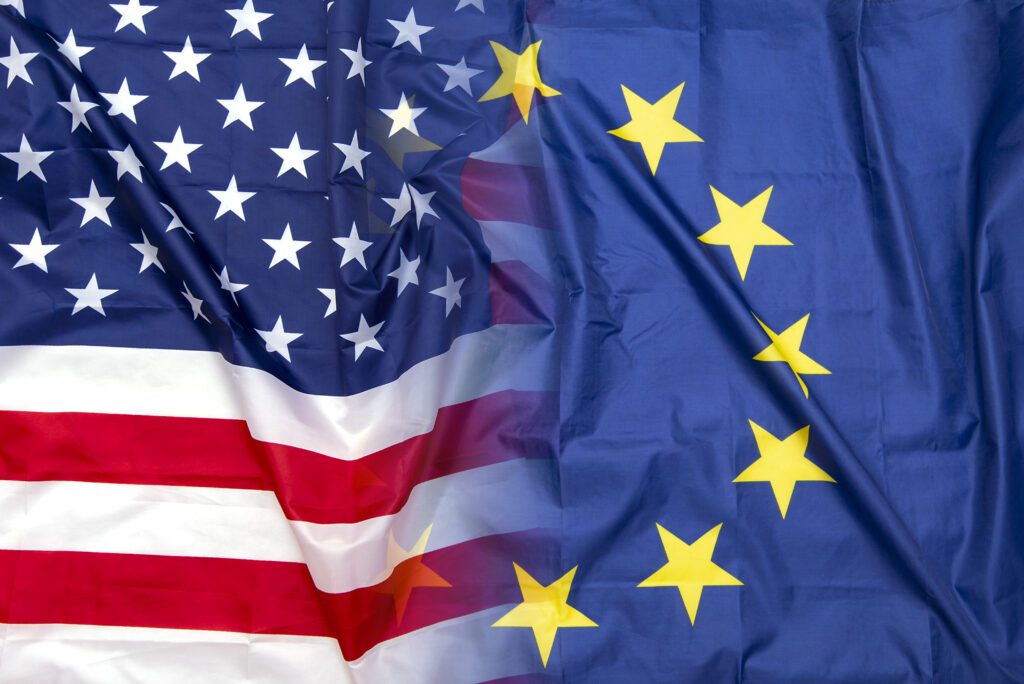
A Guide for Maine Businesses
As Artificial Intelligence continues to revolutionize industries, including marketing and communications, regulations like the EU AI Act are stepping in to ensure AI tools are used responsibly. For New England businesses with European customers, understanding and complying with this legislation isn’t just about staying within legal bounds—it’s about protecting your brand’s reputation and building trust with your audience. To help navigate this new responsibility, I wanted to break down the key points of the EU AI Act and provide a step-by-step guide to help your business stay compliant while still leveraging AI in your marketing efforts.
Understanding the EU AI Act
The EU AI Act is designed to regulate AI technologies across various industries, setting a global precedent. Here’s a snapshot of what it covers:
- Risk-Based Classification:
- AI systems are classified into four categories based on risk: unacceptable, high-risk, limited risk, and minimal/no risk.
- Examples:
- Unacceptable Risk: AI systems used for social scoring or manipulating behavior—such as an AI that manipulates consumer behavior through subliminal messaging—are outright banned.
- High-Risk: AI systems that affect critical areas like health, safety, or fundamental rights. For instance, AI tools that profile customers for targeted advertising in ways that could lead to discrimination fall into this category.
- Limited Risk: AI applications like chatbots that interact with customers online, where transparency and clear communication are key, are considered limited risk but still require careful management.
- Minimal/No Risk: AI systems used for content recommendations or basic analytics that don’t pose significant risks are categorized here and have minimal regulatory obligations.
- Transparency and Accountability:
- AI systems that interact with the public must clearly disclose their use of AI.
- Businesses must provide clear explanations of how these systems operate and maintain documentation to demonstrate compliance.
- Data Governance:
- High-risk AI systems must adhere to strict data management requirements, ensuring data quality, relevance, and privacy.
- Human Oversight:
- High-risk systems require human oversight to prevent automation bias and ensure ethical decision-making.
- Prohibitions:
- Certain AI applications, like those that exploit vulnerabilities or manipulate behavior, are banned under this act.
For marketing and communications professionals, especially those working with European audiences, ensuring compliance with the EU AI Act is crucial. Not only does it help avoid penalties, but it also reinforces your brand’s commitment to ethical practices.
Step-by-Step Guide to Compliance
- Audit Your AI Systems
- Begin by identifying all AI systems currently in use within your marketing and communications efforts.
- Categorize these systems based on the risk levels defined by the EU AI Act: unacceptable, high-risk, limited risk, or minimal/no risk.
- Example: If you’re using an AI-driven tool (Drift, Hubspot, MailChimp are all examples) for personalized email marketing, determine where it falls within these categories, considering factors like data usage and customer interaction.
- Assess Data Management Practices
- Review how your business collects, stores, and processes data, especially personal and biometric data.
- Ensure that your data management practices align with the requirements of both the EU AI Act and GDPR, focusing on data quality and protection.
- Example: If you use AI for customer segmentation, make sure the data used is accurate, relevant, and collected with proper consent.
- Develop a Compliance Strategy
- For high-risk AI systems, implement rigorous testing and validation processes to ensure they meet the EU AI Act’s standards.
- Establish clear documentation protocols for these systems, detailing how they work, the data they process, and the safeguards in place.
- Example: Document how your AI-driven advertising platform profiles users and ensure there’s a process for human review of its outputs.
- Enhance Transparency and Communication
- Ensure that your AI systems clearly disclose their use when interacting with customers. This might involve adding disclaimers or providing information on how the AI works.
- Develop communication strategies that explain to customers how their data is used and how AI contributes to their experience.
- Example: When using AI-powered chatbots on your website, include a clear message that customers are interacting with AI, and offer them the option to speak with a human if preferred.
- Implement Human Oversight
- Assign qualified personnel to monitor high-risk AI systems. Their role will be to oversee the AI’s decisions and ensure they align with ethical standards.
- Regularly review the outcomes of AI systems to identify and correct any biases or errors.
- Example: Have a team member regularly review AI decisions in customer profiling to ensure they don’t result in unintended discrimination or bias.
- Invest in Staff Training
- Educate your team about the EU AI Act and its implications for your business.
- Provide training on data protection, AI ethics, and the importance of transparency in AI interactions.
- Example: Conduct a workshop on how to use AI ethically in marketing, covering both the technical and legal aspects of AI usage.
- Monitor and Update Regularly
- Keep up to date with any changes to the EU AI Act or related regulations.
- Regularly review and update your AI systems and compliance strategies to ensure they remain effective and compliant.
- Example: Set a quarterly review of all AI systems in use to assess compliance and effectiveness.
- Leverage Compliance as a Competitive Advantage
- Use your commitment to ethical AI and compliance as a selling point. Highlighting your adherence to the EU AI Act can enhance trust with European customers and differentiate your business in the market.
- Example: Feature a blog post or case study on your website about how your company is leading the way in ethical AI use, making compliance a key part of your brand story.
Compliance with the EU AI Act isn’t just about ticking boxes—it’s about building a stronger, more ethical brand. By understanding the regulations and integrating them into your operations, you can use AI to enhance your marketing efforts while maintaining customer trust and safeguarding your business against potential risks.
As businesses across Maine continue to expand globally, being proactive about AI compliance will set you apart as a leader in both innovation and responsibility. Start by auditing your AI systems, enhancing transparency, and ensuring robust human oversight to align with these new standards. This approach not only protects your business but also positions it for sustainable growth in a rapidly evolving digital world.
As always, if we can help in any way, please don’t hesitate to reach out. ~ Elizabeth
